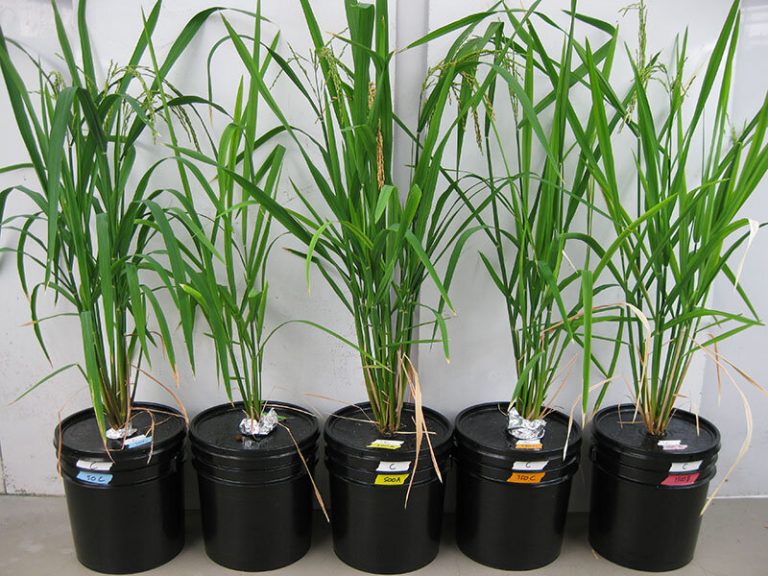When most people hear “food contamination,” they think of bacteria present on unwashed fruits or vegetables, or undercooked meat. However, there are other ways for harmful contaminants to be present in food products.
Angelia Seyfferth, a member of the Soil Science Society of America, investigates food contamination coming from the soil where the plants grow. Seyfferth explained:
“It all comes down to the chemistry of the soil.”
Most recently, Seyfferth has been studying rice. The elements arsenic and cadmium can be present in the paddies where rice is grown. She presented her research at the virtual 2020 ASA-CSSA-SSSA Annual Meeting. Seyfferth said:
“Contaminants being taken up by crop plants is a route of dietary exposure to contaminants that is understudied. We can help decrease human exposure to toxins by applying our knowledge of soil chemistry.”
Small amounts of arsenic and cadmium are present all over the globe and can be detected in many food products. It’s the concentration in the vegetable or fruit, the chemical form of the element, and how much of it someone eats that determines if an individual experiences a negative health effect.

High concentrations of arsenic and cadmium are harmful to the body. Consuming low doses over a long period of time can even cause cancer. Elements like arsenic and cadmium can be in different chemical forms depending on their environment. Contaminants are taken up by plants when their chemical form in the soil resembles a nutrient the plant needs. Seyfferth said:
“How food is grown affects not only the concentration of contaminants, but also where the contaminants are stored within the food. If we understand the chemical forms of contaminants in soil, we can design solutions to decrease plant uptake of them.”
In rice, arsenic and cadmium uptake results from opposite conditions. Arsenic can be taken up when the field is flooded. Cadmium is more likely to be taken up when the field is not flooded. Seyfferth’s work has searched for a way to prevent plants from taking up arsenic and cadmium from the soil. This is often done by adding materials to the soil called amendments.
Amendments are added to the soil to ameliorate food contamination
An amendment helps change the soil environment. By changing the soil environment, researchers can help control the chemical forms and plant uptake of contaminants in the soil. In this case, Seyfferth found that adding rice husk residue to rice paddy soils can help lower the amount of arsenic and cadmium taken up by the plants. Rice husk residue is plant material left over after processing rice for human consumption.

This solution is simple, yet effective. Rice husk residue is high in the element silicon, which is an important nutrient for rice. The chemical form of silicon is similar to the form of arsenic taken up by rice plants when fields are flooded. This similarity helps “distract the plant,” which prevents it from taking up as much arsenic.
In soils where cadmium is a problem, rice husk residue helps make the soil less acidic. This helps to lock up cadmium in the soil. The silicon in the husk may also help decrease the toxicity of cadmium. Seyfferth said:
“Not all sources of silicon behave the same way though. In order for it to be effective, the silicon source must provide silicon in a high enough concentration during the time the rice plant is filling grain. Rice husk residue is a successful source because it breaks down slowly and releases silicon throughout the growing season.”
High arsenic can decrease grain yield, but Seyfferth’s work shows that adding rice husk residues can help prevent yield loss. Half of the world depends on rice as a staple food, so this research has an exciting potential for a positive impact. In the past, Seyfferth has studied similar contamination issues in mushrooms.
For most American adults, the amount of arsenic and cadmium they consume from rice and mushrooms is not enough to cause concern. But there are other populations that eat these products more frequently and from an early age. Seyfferth explained:
“People need to be aware of their daily load of contaminants, which depends on their body weight, the concentration and chemical form of the contaminant in the food, and the amount consumed.
“The daily load is highest for people who consume rice multiple times a day and who may also have arsenic in their drinking water. Some examples include populations in South and Southeast Asia.”
Provided by: American Society of Agronomy [Note: Materials may be edited for content and length.]







